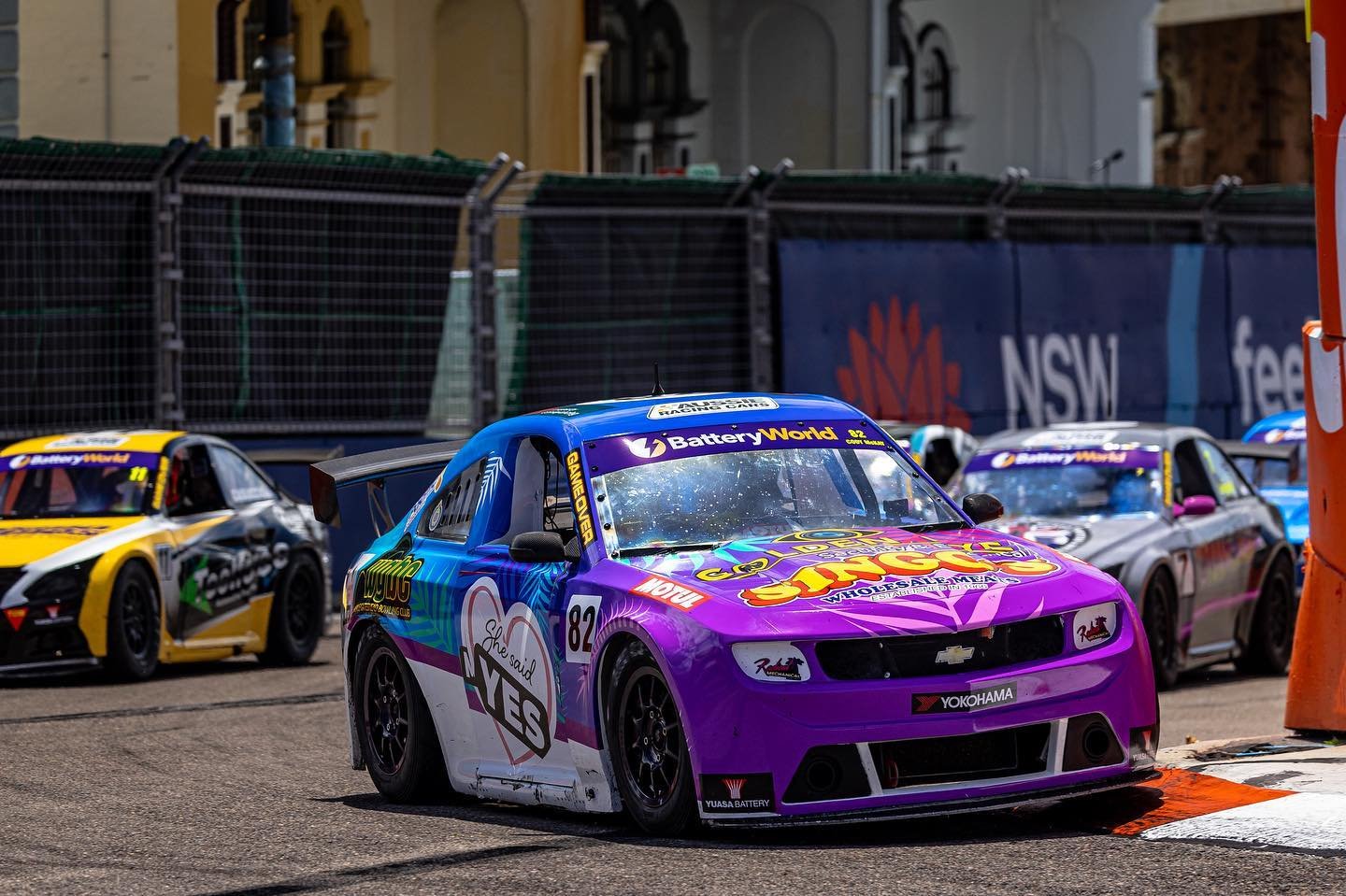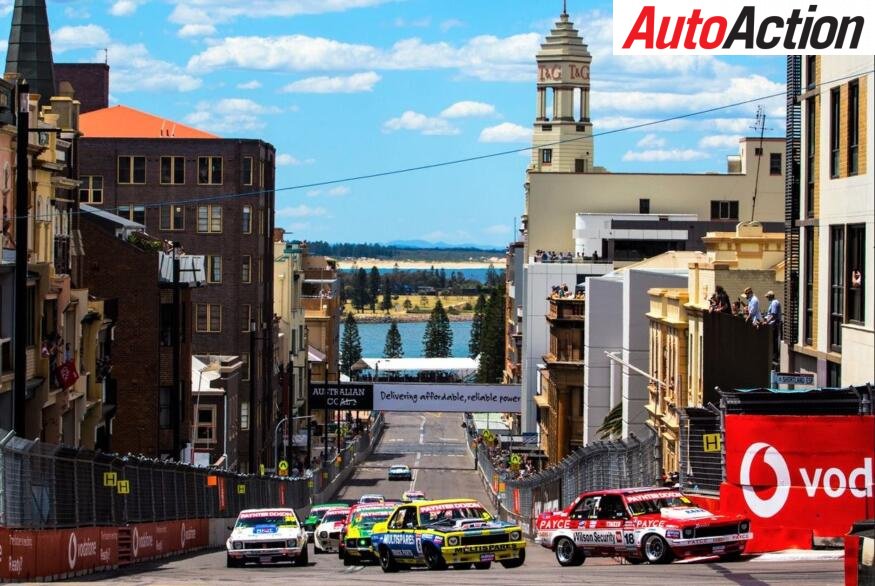Bring Back The Newcastle 500, But Lets Do It Properly
Since its inception, the Newcastle 500 has caused an ongoing rift amongst residents and race fans. It only takes a quick look at the photos of people attending the Newcastle 500 to understand the enormity of the event – so its understandable that an event of this size would come with backlash from people living within the precinct.
(Don’t let other photos fool you, the crowd is one of the biggest we see compared to other events, photo credit Newcastle Herald)
As a local business owner, race car driver, local resident, race fan and proud Novocastrian, I find myself in a unique position, wearing many hats and considering the appropriateness of the Newcastle 500 through a multitude of lenses.
I had the honour of racing the Newcastle 500 in the Aussie Racing Cars support category in both 2019 and 2023, was a spectator in 2017 and 2018, and have been a local business owner and resident throughout the race’s entire tenure. In 2023 I even proposed to my now fiancé at the event. My mechanical workshop is located on Darby Street, a mere 2km from the circuit, and my home is just 1km further from there. All this to say, the race has a strong place in my heart – but so does the City of Newcastle.
As a race car driver I’ve had the opportunity to race a multitude of street circuits beyond the Newcastle Circuit. From Sandown and the Adelaide 500 to Townsville and Bathurst I’ve gained a great understanding of not only what makes for a great event, but also have seen first hand the issues and benifits that a street circuit can cause for locals.
From all over Australia and the world, I haven’t found a track better to race at than Newcastle - Photo Insyde Media
If it was not already clear, I do love the Newcastle 500 and sincerely hope it continues. However, as a business owner and Newcastle local I can understand the other side of the coin and that is what I want to discuss today – I think there is an opportunity for us to reach a compromise, do some things better, and make the Newcastle 500 much more enjoyable and less disruptive for residents, the City and spectators alike. Below, I’ve set out some ideas in an effort to find a middle ground:
1. Control noise through category control and selection.
Noise is a very relevant issue for the residents of Newcastle’s East End, especially those who live on the straight of Watt Street.
While having street circuits that run in close proximity to peoples’ homes is nothing new for the Supercars – for example, Sandown raceway (which is used year round) is only 60m away from residences and Bathurst has homes along the circuit whose front fences double as crash barriers – I do understand that these other circuits do not have the same tunnel effect that Watt Street does, posing a whole different level of noise related challenges for the Newcastle 500.
When cars race up Watt Street they’re at full throttle – meaning cars are running at 100% up hill on a road that has homes and businesses on either side of it. What is already a loud activity becomes louder as the sound of cars at full throttle echoes off of the buildings lining either side of the track. Unlike Bathurst and Townsville, where the track has gaps between buildings and structures, allowing sound to escape, Watt street effectively becomes an echo chamber, with nowhere for the sound to disperse to. Standing on the barrier at turn 1 at the Townsville 500 with cars traveling at higher speeds than what we see on Watt st is no where near as loud, a conversation can be held.
While we can’t change the sound cars make, we can change when they make them. Supercars should consider what categories it is inviting to the Newcastle 500, considering categories that run non-V8 engines as support categories to provide residents a respite from the roar of V8 cars up Watt Street.
In 2023, four different v8 categories were invited to the event: Supercars, Super2 and Super3 (combined), and Touring Car Masters. The only non V8 engine category was the Aussie Racing Cars, meaning 75% of the day was filled with the roar of V8 engines bouncing off the Watt Street and East End Homes. Supercars could instead consider mixing up the invite list and ensuring they include quieter categories like Toyota 86s, Aussie Racing Cars and even Super Utes – who would not only generally lower the noise but can also install mufflers that would lower the noise again.
Through the installation of mufflers that reduce noise, combined with removing the “shift cut” which allows vehicles to shift without lifting the throttle (which is what causes the loud ‘crack’ noise you’d hear as the engine is stalled and then restarted in an extremely short time) we could take two, reasonable steps towards limiting the otherwise constant and roaring sound that comes from the race. Neither of these suggestions are new to the categories, with exhaust muffling being common to any racer who has competed at Wakefield park, a track which had the toughest noise restrictions out of all circuits in Australia.
Whilst most circuits don’t have building both sides of the circuit, with noise control through the categories and category selection, noise can become less of an issue - Photo Auto Action
Yes, noise is a part of motorsport – and its something rev heads like me love – but even a rev head doesn’t mind a break in the noise from time to time. I believe the above suggestions could help create more moments of respite for the ears throughout the day without dampening any drivers’ or spectators’ fun.
2: Watt St and Zara St (staircase section) No entertainment area
Continuing on the discussion of noise issues, another category that is known for being loud are the entertainment cars – used for burn outs and tricks. While these cars are a joy for kids and adults alike, there is no doubt the loud screech of a skid can be confronting, especially on a straight like Watt Street. It would be prudent for Entertainment cars such as the burnout cars to keep their trickery for more open sections of the track, using Watt and Zara as “roll through” only spaces, meaning off throttle transition to limit noise. The foreshore would not only be a cool photo op for a burnout – but also leaves more space for sound to disperse.
3: Open up the residence area or compensate the businesses effected in the residence area.
As a small business owner myself, this is one that really grinds my gears.
There are a number of amazing Newcastle businesses such as Scotties, East End Ice Creamery and Sticky Rice that I feel suffer the most because they fall within the Exclusion Zone – being a section of the circuit that is blocked off from spectators and only open to residents. As a result, these businesses lose their opportunity to trade, despite being steps from other businesses within public access zones who do their best trade days of the year during the race. Opening up these areas so the businesses can trade and allow spectators to transition through here would be beneficial to businesses and spectators – highlighting for visitors some of the city’s best spots, and ensuring these businesses don’t miss out on an opportunity to shine.
(scotties has some of the best fish and chips in Newcastle, the only problem is we cant enjoy them at the race!) - Photo Newcastle Herald
4: Pack in and pack out
A major gripe for residence is the pack in and out of the event. There is no doubt that building and packing down a street circuit is no small feat, and while improvements have been made since the race’s inception in 2017, with operations flowing much smoother since the track was first built, myself and residents can both agree that we are disappointed to see some sections of the circuit hanging around longer than we thought they should. As soon as the last car came into pit lane after Sunday’s race, crew were running and taking down the track straight away with no delay. And when I returned Monday morning to collect our equipment and car, I was impressed to find that the Watt Street barriers were completely removed, however the section on the Esplanade seemed to well overstay its welcome.
I strongly believe all focus should be to setup from turn one down to Fort Scratchely as quickly as possible, with the final section being the pit lane complex. If Watt street can be completely pulled down in one night, I would think with enough staff and resources, the majority of the remaining barriers could be removed by the following Friday. If we can make track pack down and up less of an issue, we can reduce the number of days residents need to be burdened by noises of construction and street closures. To give Supercars the benefit of the doubt, staff shortages may have been an issue due to the event coming off the back end of COVID but my hope for the next Newcastle 500 is that these issues are controlled and there is a smooth and quick bump in and bump out.
Reducing noise, reducing disruption, opening up the entire circuit so no business is left out and ensuring a tidy and quick pack up and pack down are only a handful of ways we can make this event better for everyone. I have raced all around Australia and have seen cities come together and put on incredible events that everyone enjoys – and I truly think that the Newcastle 500 event is a show stopper that can be fun for race fans and non-race fans alike. The challenge is coming to the table with solutions and being open to compromise, but this is a challenge I’m confident, with the right people steering the ship we can overcome – creating a race that is, at the end of the day, showcasing our beautiful city and giving folks the opportunity to have fun.
Please note: all comments are of the opinion of Cody McKay and do not reflect the opinion of any business owner, resident, category, council, government, volunteer, official, organisation or event.




